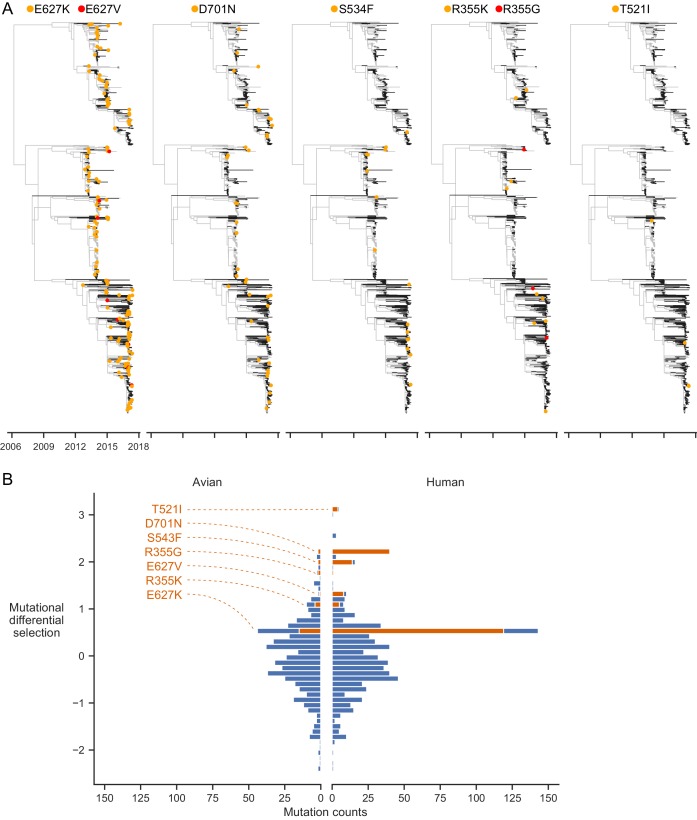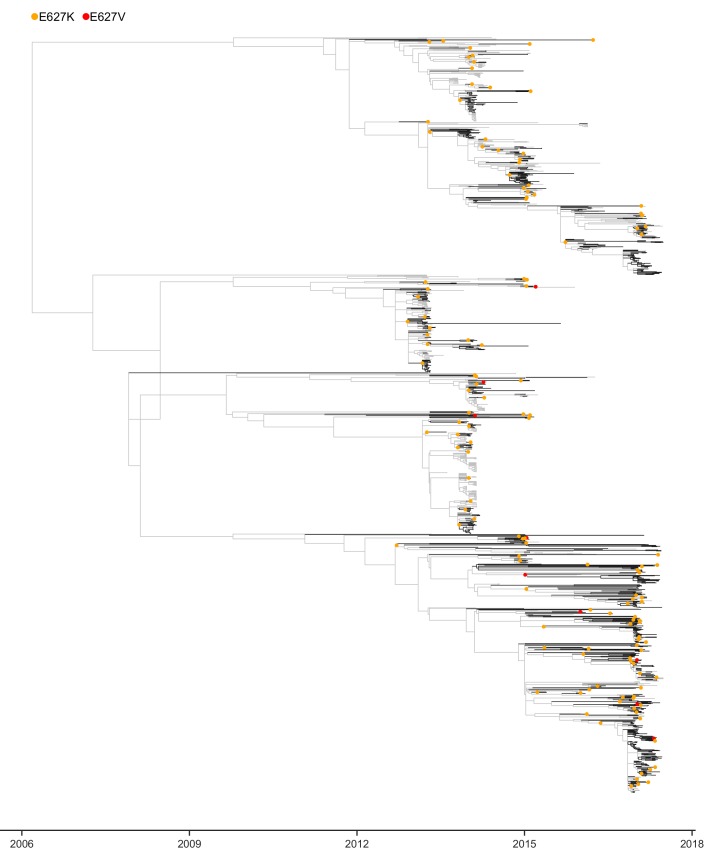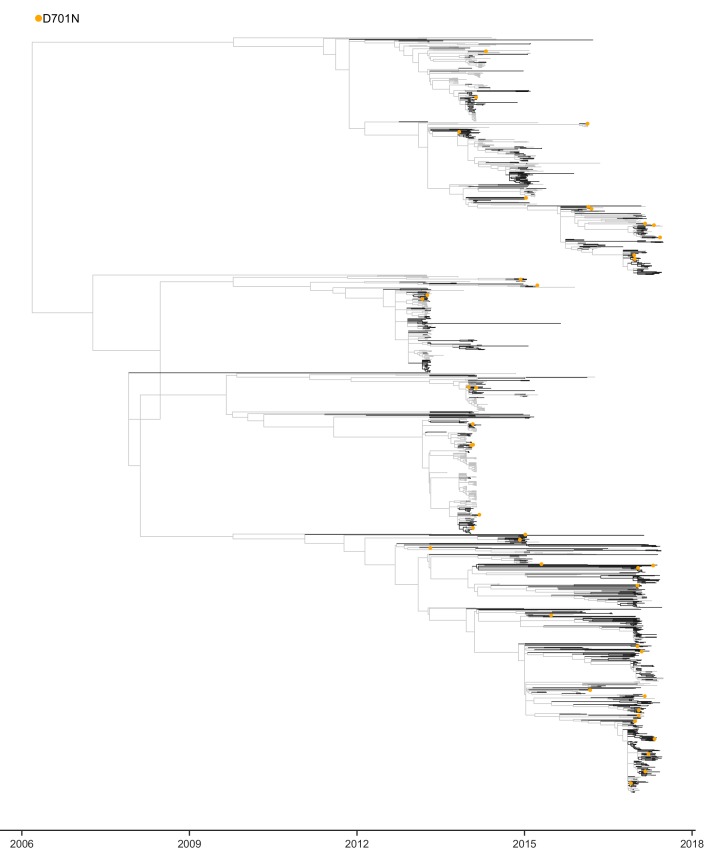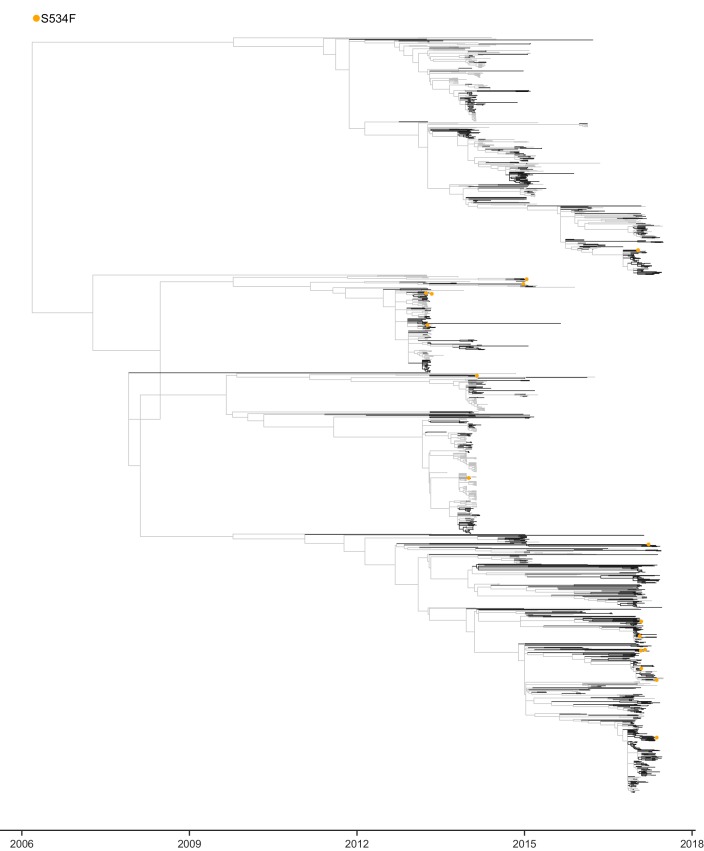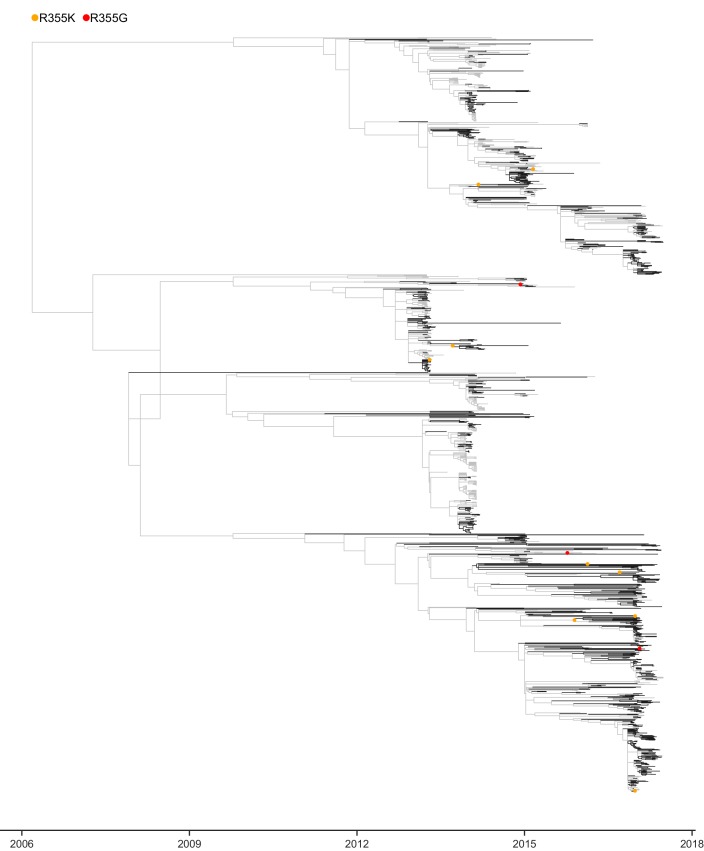Figure 6. Experimentally identified human-adaptive mutations are enriched in avian-human transmission of H7N9 influenza.
(A) Phylogeny of H7N9 influenza PB2 sequences. Branches in human and avian hosts are colored black and gray respectively. Orange or red dots indicate where a mutation was inferred to have occurred. Branch lengths are scaled by annotated and inferred dates of origin of each sequence. (B) Distribution of experimentally measured differential selection values for all mutations occurring during H7N9 evolution in human and avian hosts. A positive differential selection value means that our experiments measured the mutation to be beneficial in human versus avian cells. A subset of top differentially selected mutations that occur frequently are labeled and plotted in orange. Enlarged phylogenetic trees are in Figure 6—figure supplement 1–5. Counts of mutations identified in phylogenetic analysis are in Figure 6—source data 1. Mutations plotted in each bin of the histogram are in Figure 6—source data 2.

